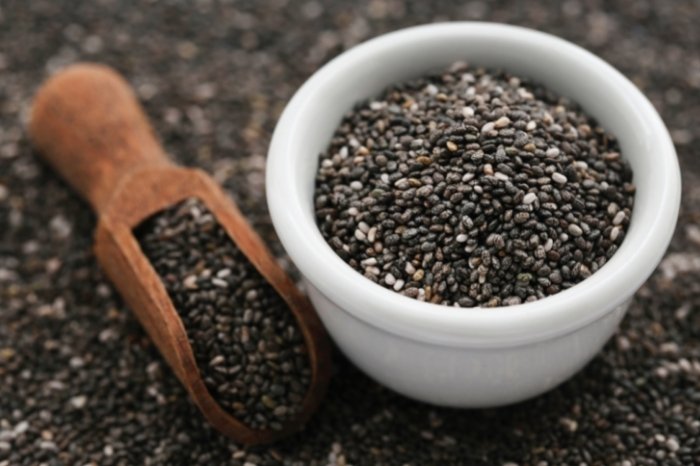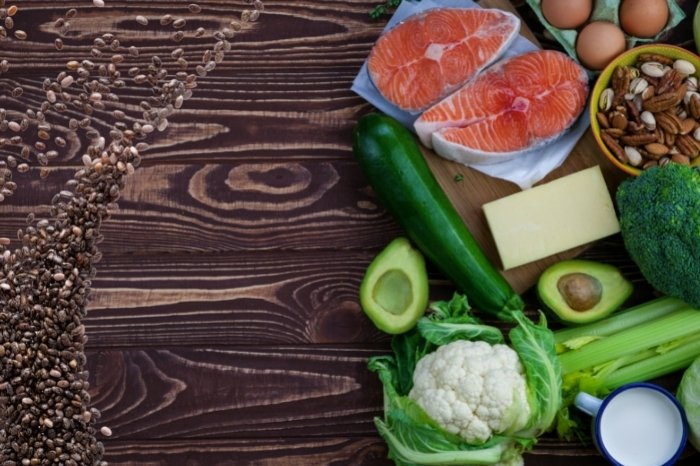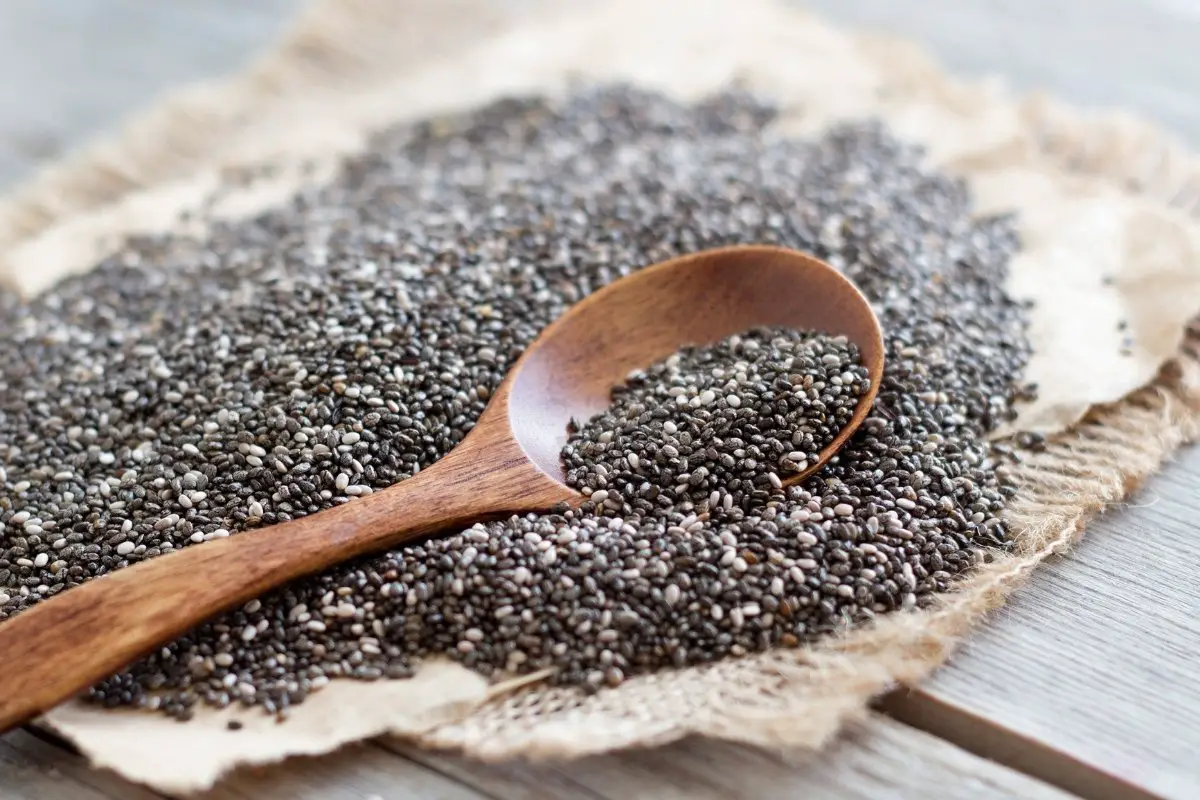Last Updated on October 12, 2024
Does chia seed contain phytic acid? This is a question floating all over the internet. The simple answer is yes, it does. However, this doesn’t take away the amazing nutrient that this plant-based food provides.
Chia seeds do contain phytate. However, they still provide nutritional health benefits that maintain our overall wellbeing. This piece will provide readers useful nutritional info on chia seeds. It will also discuss whether or not phytic acid ruins their nutritional benefit. So, without further ado, let’s dive right in.
Chia seeds are tiny black grains. They are a derivation from the chia plant (Salvia hispanica). A native of Guatemala and Mexica. They were an ancient staple food for Aztecs and Mayans. In fact, Chia means strength according to the ancient Mayans.
They provide enormous nutritional benefits which are rich in fiber as well as omega-3 fatty acids. They also consist of high-grade protein, antioxidants, and essential minerals.
Chia seeds are shiny with a smooth texture. You can find them in colors of white, brown, and black. Black is the most commonly found.
They are highly versatile and can even be soaked and made into pudding, so they can be added to porridge and can be sprinkled on yogurts and salads as well. They have excellent abilities to absorb liquid and form a paste. And as a result of this, they are used to thicken sauces.
Table of Contents
Nutritional Facts Of Chia Seed
Chia seeds contain 138 calories per ounce. This sum-up is about 6% water, 19% protein, 34% fat, and 46% carbohydrate. Note that 83% of its carbohydrate is fiber. Also, chia seeds are gluten-free. Here are a few nutritional facts about chia seed.

Carbs And Fiber
The carbs in this plant-based food are mostly fiber. Its single ounce consists of about 11 grams of fiber. This is a highly significant portion of the recommended daily intake.
Its fiber is mainly soluble fiber and mucilage. This is the substance responsible for the chia seed’s moisture and shiny texture.
Chia seed’s fiber ferments in your gut. This, in turn, promotes the formation of short-chain fatty acids. It also improves colon health.
Fat
Chia seed with phytic acid is rich in heart-healthy omega-3 fatty acids. This fat consists of about 75% omega-3 alpha-linolenic acid and about 20% omega-6 fatty acid. Research tells us that chia seeds are a better source of omega-3 fatty acids than flaxseed. This means that they fight against several chronic diseases.
Protein
As earlier stated, chia seeds consist of about 19% protein. This is similar to most plants but more than most grains and cereals.
Its protein constituent ensures there is fullness after intake. This results in reduced food intake as they provide all the nine essential amino acids, which means they are top-quality plant-based proteins.
BetterBody Foods Organic Chia Seeds with Omega-3, Non-GMO
Vitamins And Minerals
Chia seeds do provide an excellent source of minerals. However, they offer a minimal source of vitamins, Its most ample minerals are
- Manganese – Whole grains and nuts are rich in manganese. This is very crucial for metabolism, growth, and development.
- Copper – This is a mineral often missing in the modern diet. It is highly essential for heart health.
- Phosphorus – This is mainly found in protein-rich foods. They contribute to promoting bone health and tissue maintenance.
- Selenium – This is an essential antioxidant. It performs several vital functions in the body.
- Magnesium – Magnesium is often missing in western diets. It plays an essential role in several body functions.
- Calcium – This is the most sufficient mineral in the body. It helps to promote healthy bones, muscles, and nerves.
- Iron – This is a component of hemoglobin. It helps to transport oxygen to various parts of the body. However, because of its phytic acid content, iron might be poorly absorbed.
Are Phytic Acids a Dangerous Constituent in Chia Seeds?
Phytic acid is a natural substance that is found in plants. It is now receiving lots of attention as a result of its effect on mineral absorption.
Phytic acid doesn’t allow the absorption of iron, zinc, and calcium. It thereby promotes mineral deficiency. This is why it is often time referred to as an anti-nutrient.

Can Phytic Acid be Reduced in Foods?
It is quite impossible to avoid every food that contains phytic acid. This is because most of them are very healthy and nutritious. Phytic acids are found in plant-based foods. Examples of such foods are legumes and grains.
Nonetheless, several preparation methods can reduce the phytic acid content in foods (chia seeds). Here are some of the popular methods:
- Soaking: cereal and legumes can be soaked in water for some time. When this is done, it reduces its phytate content.
- Fermentation: organic acids are formed during fermentation. This helps to promote phytate breakdown. The most preferred method of fermentation is lactic acid fermentation.
- Sprouting: Sprouting grains and legumes cause phytate breakdown. This method is known as germination.
- Combining the above-listed methods can substantially reduce phytic acid in plant-based foods. For example, using the above preparation method can reduce the phytic acid content of chia seed by 90%.
Is Phytic Acid a Danger to Health?
For those who maintain a balanced diet, phytic acid is of no health concern. But, those at risk of mineral deficiency should broaden their diet. They shouldn’t include foods rich in phytate in every meal.
This might be important mostly to vegans and vegetarians. Also, those suffering from iron deficiency should consider this too. You find two types of iron in foods including the heme iron and the non-heme iron.
You find heme iron in animal-based foods. Such foods include meats and fish. At the same time, non-heme irons come from plant-based foods. Non-heme iron is altered by phytic acid. On the other hand, heme-iron is not.
Nonetheless, phytate can be a severe problem when diets compose mainly of cereals and legumes, and at the same time low in meat and fish. Using chia seed in kombucha could be a healthy way to enjoy the recipe without any of the potential risks.
This is a worrying concern to nations where legumes and whole grains are primarily part of their diet.
Bottom Line
Chia seeds are excellent plant-based food. They do have phytate in them. Still, this doesn’t mean avoiding consuming them. Several preparation methods will eradicate the phytate content in them.
Read more about Amazing Xanthan Gum Substitute

Barbara is an environmental activist and sustainability advocate who loves living green and sustainable. She firmly believes in reducing her carbon footprint and has been making great strides towards achieving this goal. Barbara is a vegan and avid recycler and has been actively involved in community gardens and other green initiatives. She is passionate about spreading awareness about the importance of living in a sustainable and eco-friendly manner. Barbara is always looking for ways to make a difference in her community and beyond. She is a huge advocate for preserving nature and the planet for future generations.


